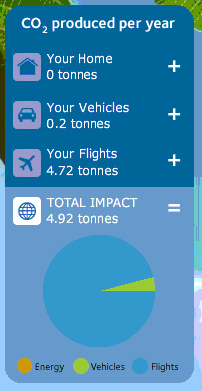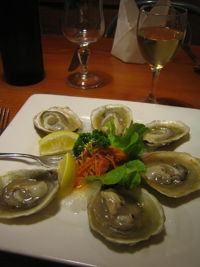Sustainable practice 2
- " In a business sense, the key messages of sustainability actually tie in with what are generally considered to be 'sound' business practices, such as building efficiency, minimising waste and maximising resources. It is not a fad and is essential for businesses to adopt in order to be successful in the emerging markets. Sustainable business practices are a new way to direct your business and can be applied across every aspect of your business - from strategy to waste disposal."
Proven benefits - Businesses that have adopted sustainable business practices have reported the following benefits:
- Reduction in operating costs
- Improved identification and management of risks
- Created value through enhance and positive customer response
- Increased ability to attract and retain employees
- Increased learning and innovation
- Reduced Government intervention
This course will build on sustainable practice skills student have already acquired and introduce them to sustainable practices organisations and attractions can adopt to ensure their longativity.
Learning Objectives
1. Identify and analyse existing practices of sustainability within an industry
2. Use a systems approach to introduce changes to methods and processes operating for the sustainability of a business within a chosen context (in this case "Tourism")
Learning support
| Course Blog |
|---|
Sustainable Business Practice weblogFailed to load RSS feed from http://sustainablepractice.wordpress.com//rss.xml|Date|short|max=3: Error fetching URL: Maximum (0) redirects followed |
- Peopled enrolled with Otago Polytechnic as students of this course have access to learning support services such as the libraries, the Community Learning Centres, regular contact with learning facilitators and lecturers, assessment services and certification.
The weblog (access to the right) will be used for readings and course information - it is expected you will make comments on the material posted on the blog, especially the readings (this will form part of your assessment).
Otago Polytechnic will be running this course from May 4 until June 26. If you would like to join this course, please contact Hillary Jenkins.
Course Schedule
- Below is a schedule for the course, including the topics, activities and assignments
- Students will be provided with a timetable.
Introductions
"Being a responsible business means having a balanced approach to economic, environmental and social priorities. For tourism businesses, we refer to this balanced approach as Responsible Tourism" - Qualmark Responsible Tourism Guide
Understanding the effect of business practices on the wider community and natural environment, creating sustainable practice and applying a team approach are some of the ways we will look at the five key areas identified as part of Qualmark's Responsible Tourism initiative:
- Energy efficiency
- Waste management
- Water conservation
- Conservation
- Community
Sustainable Business Practice
1. What is sustainability? How do businesses use sustainable practice?
Take the personal learnings that were created in the introduction to sustainability and show how important these aspects are in running a business (e.g. team work, effective communication, community engagement, feedback and monitoring). You should understand and be able to apply a definition for sustainable practice. Is it different for tourism? If so how?
Now we will start to build a glossary of terms for sustainability and tourism.
2. Using the knowledge from Sustainable Practice 1 - how do we apply this to sustainable business practice?
- Have a broad understanding of the various different tools that are available for developing business towards sustainability
- Organisations that support this – SBN, NZGBC, GBuilding etc. and their tools
- Monitoring and the importance of monitoring
- Verification tools – labels, accreditation
- Processes verification – ISO14001, CSR
View a few organisation who have recognised their opportunity
The best verification is ‘success’ (long term financial and community wealth)and to have a broad understanding of how to use the framework for sustainable practice and the importance of organisational learning.
3. Beyond Business as Usual - Discussion: what is a successful business? Likely answers: MONEY! Travel, big house, time with the family… maybe? Then you may get – longevity, community trust, reliable product, happiness, time to relax / leisure, not have to work at all??? So why isn't BAU (Business as usual) working?
Case study: VOLVO vs. Nike
- Volvo – reliable car
- Nike – reputation was destroyed due to slave labour. Now they are the leading ‘green’ shoe company.
- Why isn’t BAU working? The Funnel
- BUA = hitting the walls of the funnel
- Increasing population, decreasing resources
- Increasing and decreasing pressures on business
- Give examples of DCC – Moana pools?
Activity: Now get into groups of 5 and choose a business or project that hit the walls of the funnel. Draw it on the sheet.
4. Cooperation and communication are vital ingredients to.....Organisational Learning
- What makes a team work? Recap the exercise above.
- Why it is important to sustainability!
- Co-operation and collaboration
Activity: What is sustainability?
Get people into groups and ask them to describe something in nature that is sustainable. Give the example of a tree that works with systems.
The following are concepts of Sustainable Design Practices
- Cradle to Cradle design
- Bio-mimicry
- Case study – Interface
Activity: Space Ship Earth (Time: 20 minutes)
Activity: Networking?
NZ Organisations for supporting business
- Positive opportunities
- Consumer’s preferences are changing
- Pressures from stakeholders
5. Planning and decision making - What is sustainability? List all the things that make sustainable practice?
framework for sustainable practice
- Recap the outcomes from the Funnel discussion
- Recap the discussion of The Principles from TSP1
- Strong vs. weak sustainability
- The framework – explain why sustainable design principles, organisational learning etc.
6. Activity: With a Vision!
7. Activity: Decide between a paper cup and a travel mug – how to decide - Who do you need in the room? Make a plan
8. Tools and Measurementfor moving towards sustainable practice:
- Verification, Reporting and Monitoring
- Case study on Corporate Social Responsibility
- How sustainable is Qualmark? - Case study on Qualmark
Activity: Tools - Choose one of a number of tools and discuss? How many verification labels can you name? Ministry for the Environment website
9. How can you communicate your business’s values to your consumer’s? How do you avoid potential ‘greenwash’? What are the different types of labels? Give a brief explanation of what each of these are and some examples:
- Verification – labels, different types
- Measurement – ISO14001, life cycle assessment
- Case study on Corporate Social Responsibility Reporting – Corporate Social Responsibility (CSR)
Activity: Bring a ‘green’ or ‘sustainable’ product to class - don't forget - we will have back-up products in case you forget.
- Choose a product and discuss whether it is or is not ‘sustainable’?
10. Activity - Self organise into groups, have 4-5 people in each - pick a case study and work through the framework with the business.
• Need to create 5 businesses • Must add the people required to undertake each stage
Assessment
The following assignments and assessment activities are used to gauge students understanding and application of the concepts of
- Case Study - Assessment (80%)
- Presentation and weblog comments - Assessment (20%)
Your assessment is a casestudy Kai Moana Scuba.
Kai Moana Scuba "Nestled in the deep south of New Zealand Kai Moana Scuba (KMS) is the newest in scuba-diving experiences. KMS was set up by Nin Hopu as a commercial operation to allow people the experience of collecting and eating their own sea food, or kai moana."
This is a comprehensive assignment which allows you some creative interpretation. We hope you enjoy it and most importantly learn from the experience.
Things to note:
That presentation and weblog comments are worth 20% - so make sure you do this and you need to have an understanding of the qualmark toolkit and checklist




